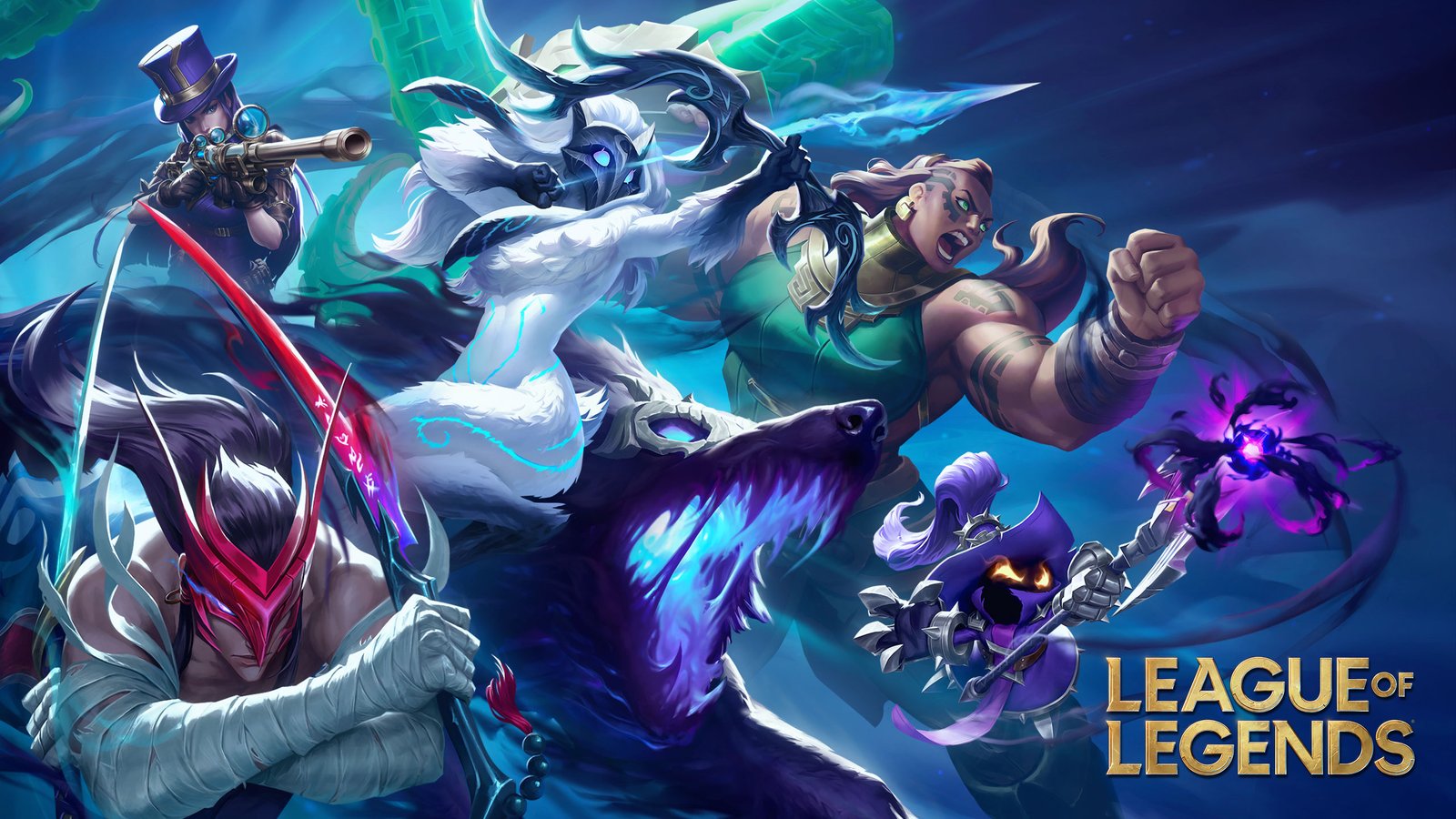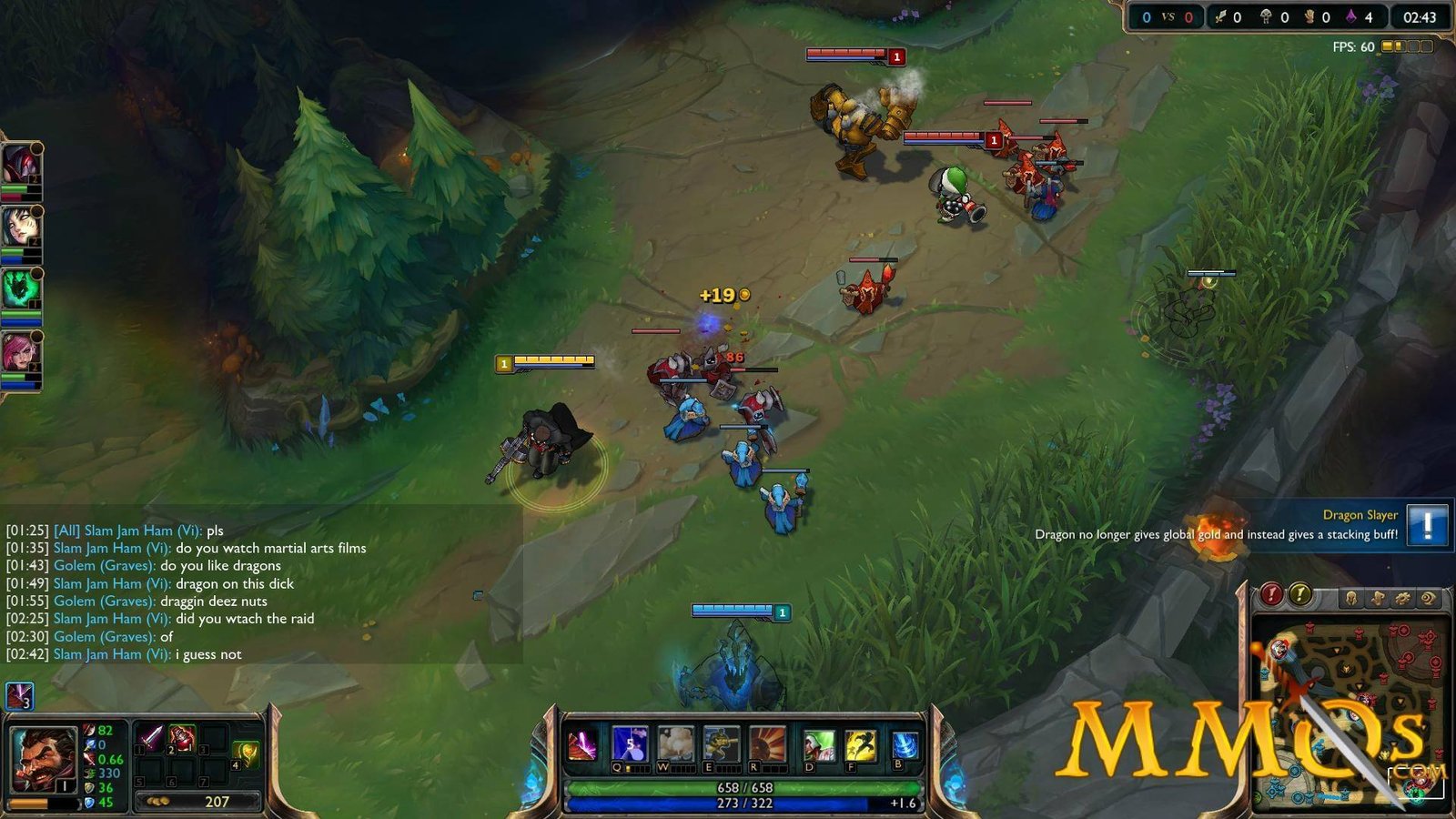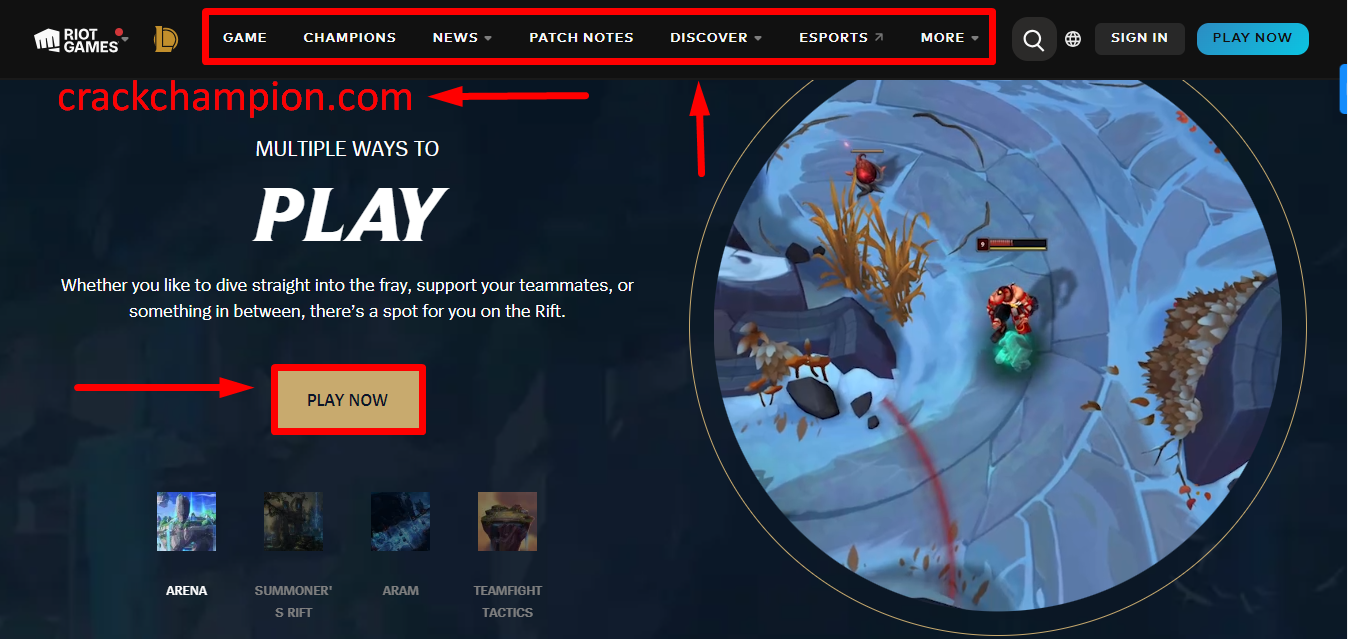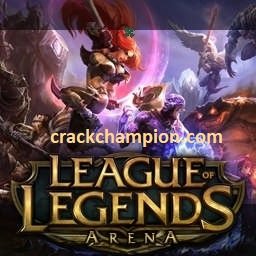League of Legends | Builds, Guides, Counters Full Version:
“League of Legends App Store” (LoL), created and distributed by Mob Games, is one of the most famous multiplayer online fight field (MOBA) games on the planet. Delivered in 2009, the game immediately collected a monstrous following, securing itself as a foundation in the eSports people group. With its key ongoing interaction, normal updates, and broad legend, “League of Legends” has kept up with its enticement for an expansive crowd, from easygoing gamers to professional players.

At its center, “League of Legends Worlds” sets two groups of five players in opposition to one another, with every player controlling an extraordinary hero with unmistakable capacities. The essential goal is to obliterate the rival group’s Nexus, a construction situated in their base while shielding your own. This is accomplished through collaboration, vital preparation, and capable execution, making each match a dynamic and exciting experience. The game’s intricacy is additionally improved by its consistently growing program of champions and different strategic choices, taking into consideration a serious level of customization and replayability.
League of Legends: Leagues and Tournaments Full Details Here:
The effect of “League of Legends Free” reaches a long way past ongoing interaction. It has fundamentally impacted the eSports scene, adding to the development of cutthroat gaming as a real game. Significant competitions, like the yearly League of Legends Big Showdown. It also draws in a large number of watchers around the world, offering significant award pools and cultivating a professional biological system. This has prompted the ascent of eSports groups, sponsorships, and a devoted fanbase. It also makes “League of Legends” a critical player in the worldwide gaming industry.
Also, Mob Games has persistently developed “League of Legends Apk” by presenting new satisfied, balance refreshes, and connecting with storylines. This continuous help has kept up with player interest and encouraged a lively local area. The game’s rich legend and different hero foundations give a profound story setting, upgrading the vivid experience. Through different media, including comics, music recordings, and enlivened series, “League of Legends” has extended its universe, enthralling crowds both inside and past the gaming scene.
League Of Legends Development, History, and Release Date Full Details Here:
Development
League of Legends (LoL) was created by Mob Games, an organization established by Brandon Beck and Marc Merrill. The improvement of the game started around 2006, determined to make a cutthroat and dynamic multiplayer online fight field (MOBA) game. Motivated by the well-known Warcraft III mod, Guard of the People of Old (DotA), Beck and Merrill looked to make a standalone game that would refine and expand on the MOBA type.
The improvement group incorporated a few vital figures from the DotA people group, including Steve “Guinsoo” Feak and Steve “Pendragon” Mescon, who brought their mastery and energy for the class to the venture. Revolt Games accentuated local area contribution from the early stages, looking for criticism from players to refine game mechanics, equilibrium, and plan.
Following three years of improvement, League of Legends was officially declared in October 2008. Revolt Games zeroed in on making an allowed-to-play model, with income produced through microtransactions for corrective things, as opposed to a compensation-to-win structure. This model is considered an expansive player base, making the game open to a wide crowd.
Launch and Early Growth
League of Legends was delivered on October 27, 2009. At launch, the game included 40 bosses and a solitary guide, Summoner’s Break. The game was generally welcomed, and adulated for its essential profundity, connecting with interactivity, and the availability of its allowed-to-play model. The early outcome of the game was reinforced by Uproar Games’ obligation to standard updates, which included new bosses, game modes, and equilibrium changes.
The game immediately developed in ubiquity, with Mob Games constantly putting resources into the server foundation to help the rising number of players. In 2011, Mob Games presented the Council framework, which permitted players to partake in the control cycle, cultivating a local area-driven way to deal with keeping a positive in-game climate.
Gameplay Mechanics
League of Legends (LoL) is a multiplayer online fight field (MOBA) game where players participate in vital 5v5 matches, each controlling a hero with one-of-a-kind capacities and jobs. The game is played from a hierarchical viewpoint, underlining collaboration, talented play, and strategic independent direction.
Key gameplay mechanics include:
- Champion Determination and Jobs: Players browse a program of the north of 150 bosses, each squeezing into one of a few jobs like a tank, marksman, mage, professional killer, or backing. Group arrangement and collaboration are critical for progress.
- Minion Waves and Turrets: Matches rotate around directing rushes of computer-based intelligence-controlled followers toward adversary turrets. It also should be obliterated to progress across the guide. Turrets safeguard key focuses and give targets to vital play.
- Objectives and Wilderness: Unbiased targets like the Winged Serpent and Nobleman Nashor give huge buffs and gold prizes, empowering groups to arrange and control the wilderness regions between paths. Challenging these targets often chooses the progression of the game.
- Skillful Battle and Capacities: Champions have four special capacities, incorporating an extreme capacity with long cooldowns. It also requires exact timing and situating to amplify influence in group battles and conflicts.
- Items and Movement: Players procure gold by overcoming followers, champions, and goals, which is utilized to buy things that upgrade their boss’ details and capacities. The organization is custom-fitted to counter rivals and synergize with a hero’s assets.
- Map Mindfulness and Vision Control: Vision wards and clearing devices permit groups to control vision across the guide, significant for staying away from ambushes, setting targets, and keeping up with map control.
- Dynamic Guide and Methodology: The game’s guide, Summoner’s Break, highlights three paths associated with a wilderness, setting out open doors for split-pushing, flanking moves, and vital turns to outsmart rivals.
- Ranked and Easygoing Play: Players can also partake in positioned matches to ascend a stepping stool framework in light of their exhibition, or appreciate relaxed play modes for training and trial and error with various heroes and methodologies.

The objective of the Game
The essential target of League of Legends (LoL) is for two groups of players to cooperate decisively to annihilate the rival group’s Nexus, situated in their base while shielding their own Nexus. This includes exploring the game guide, overcoming adversary champions, and decisively utilizing assets to acquire benefits that lead to the obliteration of the foe’s base. Triumph is accomplished by effectively penetrating the rival’s safeguards and annihilating their Nexus before they can do likewise to yours.
In-Game Progression
In League of Legends, in-game movement rotates around the aggregation of involvement focuses (XP) and the obtaining of Impact Focuses (IP) or Blue Embodiment (BE). Players also partake in matches, whether in PvP (Player versus Player) or PvE (Player versus Climate) modes. They procure XP which adds to stepping up their record.
Stepping up awards admittance to different rewards, for example, Dominance and Summoner Spells, which are critical for improving a hero’s capacities and system. Dominance levels mirror a player’s proficiency with individual bosses, displaying their commitment and expertise.
Also, IP or BE are acquired through ongoing interaction and can be utilized to open new bosses, runes, and rune pages. Runes and rune pages offer customization choices, permitting players to fit their hero’s assets and playstyle to suit various matchups and group arrangements.
In the cutthroat play, advancing through positioned levels — from Iron, Bronze, Silver, Gold, Platinum, Diamond, Master, Grandmaster, and Challenger — exhibits a player’s ability level and responsibility. Moving through these levels requires steady execution and vital navigation, as every level presents harder adversaries and higher stakes.
Additionally, occasional occasions and updates present new happy-like heroes, skins, and game modes, advancing the experience and empowering continuous commitment. The dominance of League of Legends includes dominating the mechanics of ongoing interaction as well as figuring out group elements, map mindfulness, and key reasoning — which add to a player’s general movement and progress in the game.
Endgame and Victory Conditions
Endgame:
In League of Legends, the final stage denotes the peak of key moves and group fights. As the game advances and advocates amass gold and experience, their power develops. It also prompts bigger group battles and essential goal challenges. Vision control becomes principal as groups compete for command over key regions like Aristocrat Nashor and the Essential Drakes. Final plan techniques often rotate around facilitated pushes, flanking moves, and tying down goals to acquire benefits over the adversary. A definitive group battle or a fruitful attack on the foe Nexus turrets can rapidly reverse the situation of the game, prompting the last period of finishing off the match.
Victory Conditions:
Victory in League of Legends is accomplished by annihilating the foe Nexus, found profound inside their base. To arrive at this objective, groups should organize their endeavors across various periods of the game. Early goals, for example, external turrets give map control and gold benefits. While mid-game clashes and group battles permit groups to lay out predominance and secure bigger targets like Break Envoy and Mythical Serpent buffs. Changing into the late game, groups center around boosting their benefit through organization and vision control. It also made way for basic battles around Aristocrat Nashor. Getting these goals often prompts the last push, where groups benefit from their benefits to break the adversary base and obliterate the Nexus, guaranteeing victory in the match.
Community and Competitive Scene of League of Legends
League of Legends (LoL) flaunts a dynamic community and an exceptionally competitive scene that has developed fundamentally since its send-off in 2009. The game, created by Uproar Games, has turned into a worldwide peculiarity, drawing in a large number of players and observers the same.
Community Engagement:
The LoL community is prestigious for its enthusiasm and variety. Players connect through gatherings, virtual entertainment, and in-game communications, examining techniques, and updates, and sharing fan-made content like craftsmanship and recordings. Community-driven occasions, similar to fan shows and online competitions, further reinforce the game’s allure. It also encourages a feeling of fellowship among players around the world.
Competitive Esports:
At the apex of League of Legends is its competitive esports scene. It also highlights professional leagues across different areas including North America (LCS), Europe (LEC), China (LPL), and South Korea (LCK), and that’s only the tip of the iceberg. Every locale has ordinary seasons finishing in playoffs, where top groups fight for desired spots in worldwide competitions.
The yearly apex of LoL esports is the Big Showdown. Where the best groups from every area go after the Summoner’s Cup. This occasion draws in a huge number of watchers around the world and establishes standards for esports viewership.
Moreover, Revolt Games puts vigorously in the esports framework, guaranteeing fair rivalry and high creation values. The competitive scene exhibits top-level interactivity as well as drives development in procedures and game equilibrium. Professional players hold a revered status in the community, as they boast dedicated fan bases and lucrative sponsorships. Additionally, they are worshiped as famous people.

System Requirement:
- Operating System: Windows 7/8/10 (64-bit versions)
- Processor: Intel Core i3-2100 / AMD Phenom II X4 945 or better
- Memory: 4 GB RAM
- Graphics: NVIDIA GeForce GTX 560 / AMD Radeon HD 7870 or better
- Storage: 16 GB available space
- Resolution: Minimum display resolution of 1920 x 1080
How To Install For PC?
- First, Visit the official League of Legends website.
- Second, Click on the “Play Now” button or navigate to the “Download” section.
- Choose the appropriate version for your operating system (Windows or Mac).
- Click on the download link to start downloading the installer.
- Once the download is complete, locate the installer file on your computer (typically in your Downloads folder).
- Double-click the installer file to launch the installation process.
- In terms, Follow the on-screen instructions provided by the installer.
- Choose your preferred installation location and create shortcuts if desired.
- Wait for the installation to complete.
- Once installed, launch the League of Legends client and follow any additional prompts to complete the setup.
- Log in with your existing account or create a new one if you’re a new player.
- After logging in, the game will begin updating to the latest version automatically.
- Last, Once the update is complete, you can start playing League of Legends on your PC.
Conclusion
Moreover, League of Legends remains a seminal pillar within the domain of online gaming. It also offers a dynamic and immersive experience that rises above simple entertainment. Its enduring popularity is a demonstration of its ability to captivate millions of players worldwide. It also fosters a vibrant community that thrives on competition, camaraderie, and creativity. Past its surface allure as a competitive multiplayer game. Overall, League of Legends fills in as a stage for self-improvement, strategic thinking, and cooperation. It also shaped the gaming scene and influenced the more extensive social zeitgeist. As it continues to develop and innovate, League of Legends remains a cornerstone of contemporary gaming society. It also leaves an indelible blemish on the two players and the industry overall.
Fundamentally, League of Legends is something other than a game. It’s a social peculiarity that has reshaped how we perceive and draw in with digital entertainment. Its mix of technique, skill, and social interaction has raised it to iconic status. It also inspires innumerable players to push the boundaries of their abilities while forging lasting connections with others. As the gaming scene continues to develop, League of Legends remains a guide of innovation and greatness. It also reminds us of the transformative force of virtual universes to unite, inspire, and entertain on a worldwide scale.
FAQs About League Of Legends
-
What is League of Legends?
League of Legends, often abbreviated as LoL, is a famous multiplayer online fight arena (MOBA) game created and published by Riot Games. It highlights groups of champions, each with their unique abilities. They also battle against one another to destroy the opposing group’s Nexus, a construction situated within their base.
-
How do I play League of Legends?
To play League of Legends, you want to download the game client from the official website or a confided-in digital distribution stage. After installing, you’ll have to make a record or sign in with an existing one. Once in the game, you can browse a variety of champions and participate in matches against other players or AI-controlled rivals.
-
What are the champions in League of Legends?
Champions are the playable characters in League of Legends, each with their unique arrangement of abilities and playstyle. There are north of 150 champions available, divided into different jobs like tanks, mages, marksmen, assassins, and supports. Players select a champion toward the beginning of each game and work with their group to achieve victory.
-
What are the different game modes in League of Legends?
League of Legends also offers a few game modes to take special care of different inclinations and playstyles. The primary mode is Summoner’s Rift, a 5v5 guide where groups contend to obliterate each other’s Nexus. Other modes include ARAM (All Random All Mid), where players fight on a single path with random champions, and Teamfight Tactics, an auto battler spin-off featuring LoL champions.
-
Is League of Legends free to play?
Indeed, League of Legends is free to play. While the game offers optional in-game buys for cosmetic items like skins. You can unlock champions through gameplay or buy them with in-game currency earned by playing matches. This model permits players to partake in the center gameplay experience without having to burn through cash.

